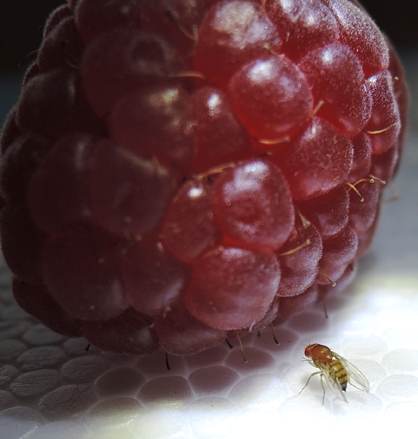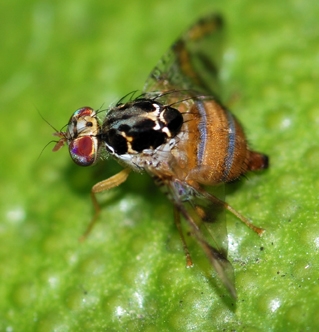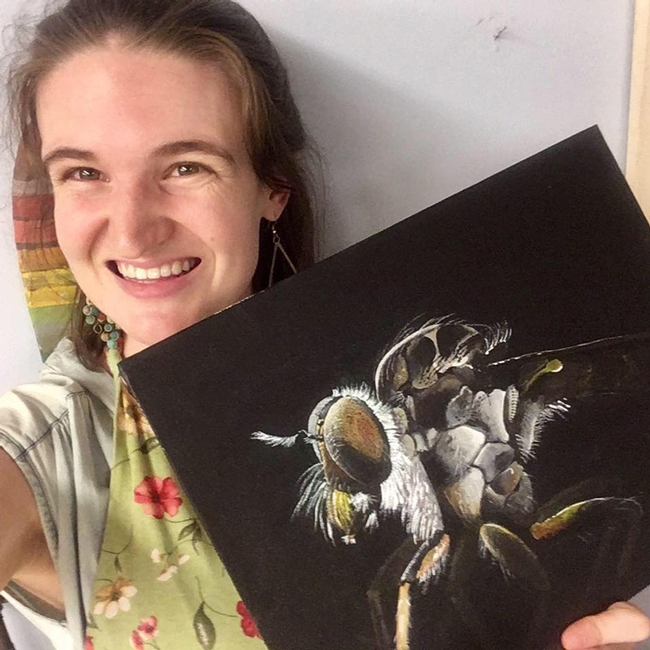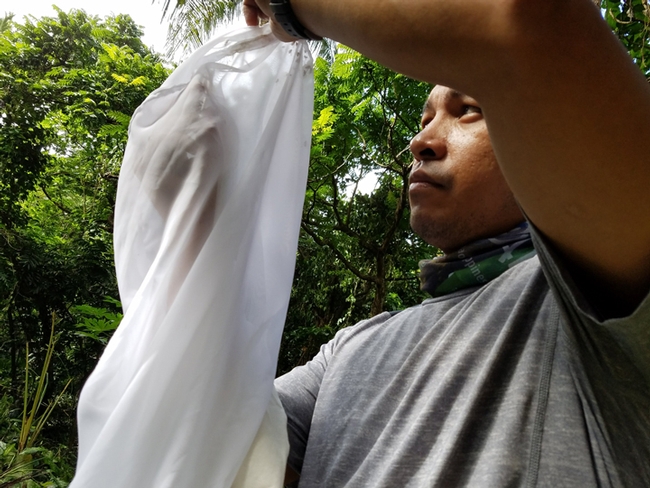- Author: Kathy Keatley Garvey

No, time's fun when you're studying flies!
Nearly a dozen fly researchers from throughout the UC Davis campus will greet the public and explain their research at the Bohart Museum of Entomology open house from 1 to 4 p.m., Saturday, Jan. 12 in Room 1124 of the Academic Surge Building, Crocker Lane. The event, themed “Time's Fun When Studying Flies," is free, open to the public, and family friendly.
The open house will showcase botflies, fruit flies, assassin flies, mosquitoes and other members of the Diptera order. Ten scientists, including undergraduate students, graduate students and a visiting scholar, are scheduled to participate. They will display specimens, photos and field equipment and chat with the public.
"Besides checking out the flies, this is also a good time for visitors to inquire about graduate school, ask about starting research projects, and to meet people working in forensics, evolution, agriculture, animal behavior, genetics, geography, and home pests, among other topics," said Tabatha Yang, education and outreach coordinator.
Entomologist Jeff Smith, who curates the Bohart's butterfly and moth section, will be on hand to open the Diptera section. "He will dust off and put on his pest industry hat to talk about those relevant flies," Yang said.
A family craft activity is also planned.
Among the fly researchers participating will be fourth-year doctoral candidate Charlotte Herbert Alberts, who studies assassin fly (Asilidae) systematics with major professor Lynn Kimsey, director of the Bohart Museum of Entomology and UC Davis professor of entomology.

She lists other interesting facts about assassin flies:
- They are venomous! Their venom both immobilizes their prey and starts extra-oral digestion.
- They have very fancy facial hair (beards and mustaches) called a mystax, thought to protect their face while they catch and eat their prey.
- Some assassin flies are very selective in their prey choice and may have specialized venom to help them overcome their prey.
- There are more than 7,500 species found all over the world!
“I am currently working on a few projects: An Asiloidea Phylogeny, Predator-Prey Dynamics of Asilidae and their kin, and a few side projects including the revision of Ablautus, and Nearctic Saropogon,” Alberts says. She is also interested in assassin fly venom and how it may have evolved to target certain prey taxa. In addition, she teaches basic entomology and art in a UC Davis Art/Science Fusion Program course.
Graduate student Socrates Letana, who also studies with major professor Lynn Kimsey. researches the evolution and diversification of botflies (Oestridae) "in the global mammal host-space with special emphasis on the New World." Part of his research interests include Diptera systematics, biogeography and Southeast Asian biodiversity. He is a research associate with the California State Collection of Arthropods, California Department of Food and Agriculture.
The larvae of botflies are internal parasites of mammals; some species grow in the host's flesh and others within the gut. Dermatobia hominis is known as the only species of botfly known to parasitize humans routinely.
UC Davis undergraduate researcher Cindy Truong of the Joanna Chiu lab, will be showing flies in various life stages and provide coloring pages for kids. "We primarily study circadian rhythm, which is the sleep and wake cycle. More specifically we study the mechanisms in which 'clock proteins' go through in order to maintain this cycle." She will expand on "How flies tell time.”
Christine Tabuloc, graduate student researcher in the Chiu lab, will discuss her work on fruit flies. "My current focus is to investigate the effects of climatic change on gene expression of an invasive pest and determine whether there is a correlation to resistance and survival," she said. "In addition to pest management research, I am also studying a kinase of a core clock protein in Drosophila melanogaster and hoping to dissect its functional contribution to the molecular oscillator."
Others from the Chiu lab participating will be Yao Cai, a doctoral graduate student who studies genetic mechanisms underlying the regulation of organismal behavior, and undergraduate researcher Christopher Ochoa.
The presenters also will include fruit fly, forensics and mosquito experts:
- Kathlyne-Inez Soukhaseum of the Frank Zalom lab will talk about her research on the spotted-wing drosophila, Drosophila suzukii, a major agricultural pest that invaded California in 2008.
- Danielle Wishon, a forensic entomologist who holds a bachelor's degree in entomology from UC Davis, will discuss how flies are used in forensics. She hopes to enroll in graduate school at Purdue University.
- Nermeen Raffat, visiting scholar in the Sharon Lawler lab, will focus on mosquito larvae. He is working on "the effect of copper sulphate and other toxicants on the development and anti-predatory behavior of the mosquitoes larvae."
The Bohart Museum, founded in 1946 by UC Davis entomologist Richard “Doc” Bohart (1913-2007), is the home of nearly eight million insect specimens, plus a year-around gift shop and a live "petting zoo" that includes Madagascar hissing cockroaches, stick insects, tarantulas and praying mantids. The gift shop is stocked with newly published calendars, books, jewlery, t-shirts, insect-collecting equipment, insect-themed candy, and stuffed animals.
The Bohart Museum is open to the general public Mondays through Thursdays, from 9 a.m. to noon and from 1 to 5 p.m., plus occasional, weekend open houses. Admission is free. Further information is available on the Bohart Museum website at http://bohart.ucdavis.edu/ or contact (530) 753-0493 or bmuseum@ucdavis.edu.




